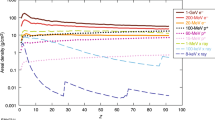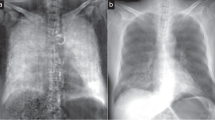Abstract
IN order to obtain radiographs of thin, easily penetrated materials, X-rays generated at only a few thousand volts (that is, Grenz-rays) have been used. This necessitates the use of a special Grenz-ray tube having a window transparent to the rays. In numerous cases, however, excellent radiographs of such materials can be obtained with the apparatus more commonly available in a radiographic department, by employing the secondary β-radiation emitted under high-voltage X-ray excitation from the lead intensifying screens which are frequently used in high-voltage radiography.
This is a preview of subscription content, access via your institution
Access options
Subscribe to this journal
Receive 51 print issues and online access
$199.00 per year
only $3.90 per issue
Buy this article
- Purchase on Springer Link
- Instant access to full article PDF
Prices may be subject to local taxes which are calculated during checkout
Similar content being viewed by others
Author information
Authors and Affiliations
Rights and permissions
About this article
Cite this article
TASKER, H., TOWERS, S. 'Electron Radiography' using Secondary β-Radiation from Lead Intensifying Screens. Nature 156, 50–51 (1945). https://doi.org/10.1038/156050a0
Issue Date:
DOI: https://doi.org/10.1038/156050a0
This article is cited by
-
Radiography with Beta-Rays
Nature (1949)
-
Fluorescence of Highly Insulating Dielectrics Produced by X- and γ-Radiations
Nature (1948)
Comments
By submitting a comment you agree to abide by our Terms and Community Guidelines. If you find something abusive or that does not comply with our terms or guidelines please flag it as inappropriate.



